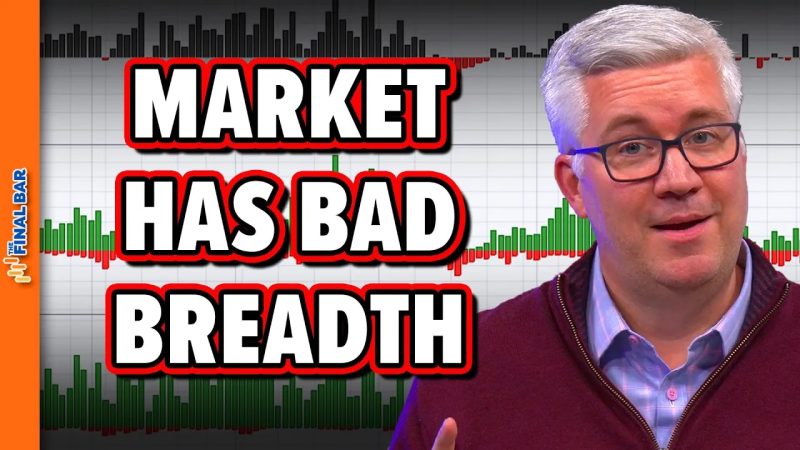Market breadth is a critical indicator that provides investors with insights into the overall health of the financial markets. It measures the number of advancing stocks versus the number of declining stocks within a given market. Poor market breadth signals a lack of broad participation in the market rally, potentially indicating weakness in the overall market sentiment.
One key concern stemming from poor market breadth is the sustainability of the market rally. When only a small number of stocks are driving market gains, it raises questions about the breadth of the rally. If a handful of large-cap stocks are propping up the market while the majority of stocks are lagging behind, it could suggest that the rally is not supported by a strong foundation.
Another issue related to poor market breadth is the lack of diversification in market performance. When only a select few stocks are driving gains, it can lead to a concentration of market performance in a limited number of sectors or industries. This concentration increases the overall market risk as it becomes more vulnerable to any adverse developments impacting those specific sectors or companies.
Additionally, poor market breadth can also indicate underlying weaknesses in the economy. If the majority of stocks are struggling while only a few are performing well, it may reflect broader economic challenges that are not fully captured in headline market indices. Investors should be mindful of these warning signs as they can have significant implications for their investment portfolios.
While poor market breadth raises concerns, it also presents opportunities for savvy investors. By monitoring breadth indicators and assessing the underlying market dynamics, investors can identify potential areas of weakness or strength in the market. This information can guide their investment decisions and help them navigate volatile market conditions more effectively.
In conclusion, poor market breadth is a red flag that investors should not ignore. It highlights underlying weaknesses in the market and can signal unsustainable market rallies. By paying attention to market breadth indicators and understanding their implications, investors can make more informed decisions to protect and grow their wealth in a challenging market environment.

